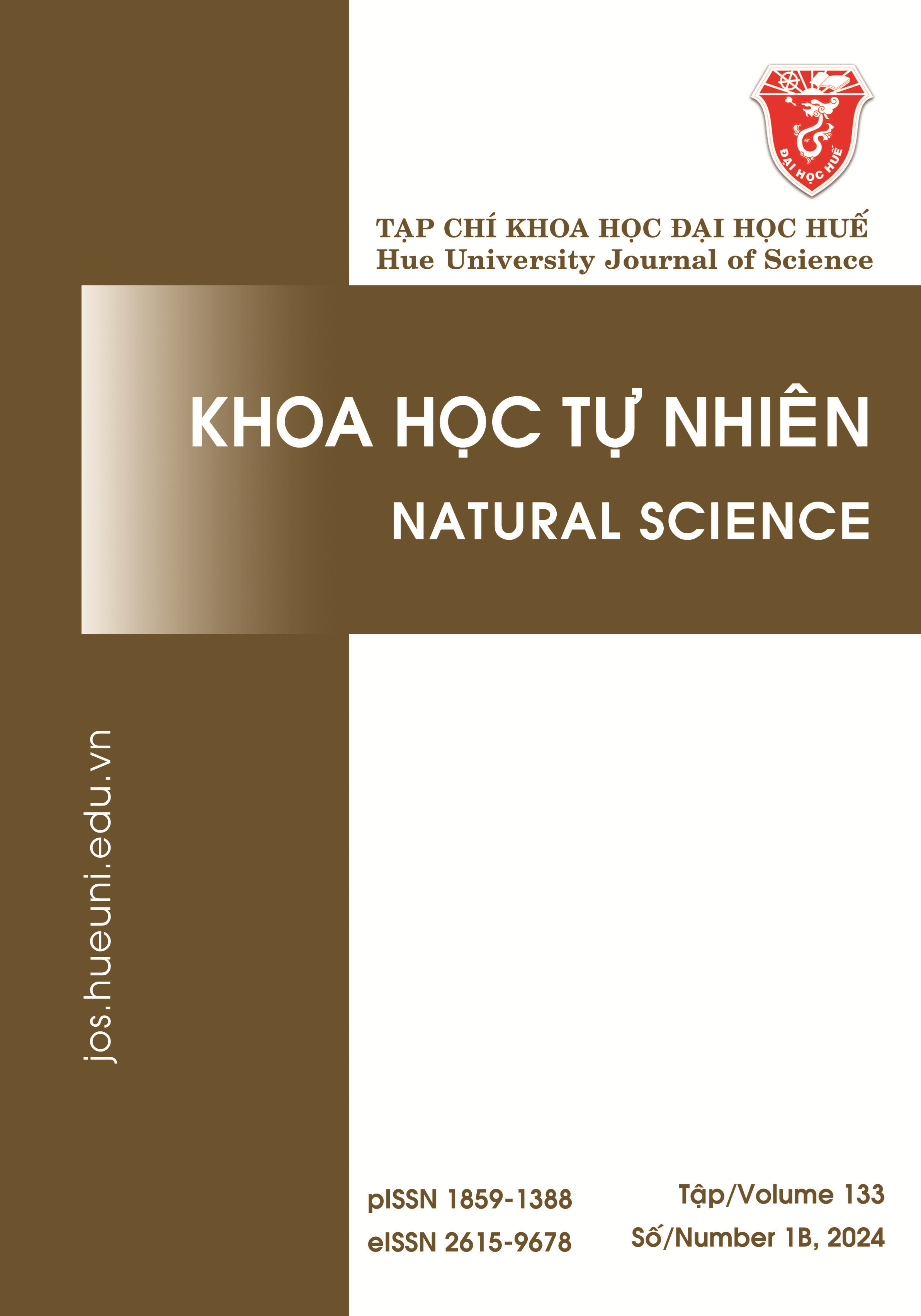Abstract
Santalum album L. is a precious medicinal herb with high economic value and has been extensively cultivated in Vietnam in recent years. Studies have revealed that the leaves contain two main active ingredients vitexin and isovitexin, which have demonstrated significant potential in treating diabetes, cancer, and inflammation. To contribute to the standardization of the title medicinal herb and its formula, a simple, fast precise and selective method for the simultaneous quantification of vitexin and isovitexin using ultra-performance liquid chromatography (UHPLC) has been developed and validated. The quantification procedure was performed on a Hypersil GOLD aQ Column (3 μm; 150 × 2.1 mm) at 35°C, with a mobile phase of acetonitrile (A) and and water with 0.1% formic acid (B), a flow rate of 0.3 mL/min, a detection wavelength of 336 nm, and an injection volume of 3 µL. The gradient program was set to 0.0-15.0 minutes, transitioning from 5% to 35% A, and 15.0-20.0 minutes, transitioning from 35% to 5% A. Validation of the quantification procedure, following ICH Q2 (R2) guidelines, demonstrated that the method achieved specificity, accuracy, precision, and linearity, with a high correlation between the peak area and the concentrations of vitexin and isovitexin (R2 values of 0.9998, respectively). Thus, the developed method can be utilized to determine the content of vitexin and isovitexin in Santalum album L. leaves, contributing to the standardization of medicinal herbs.
References
- Pullaiah T, Das S, Bapat V, Swamy M, Reddy V, Sri Rama Murthy K. Sandalwood: Silviculture, Conservation and Applications. Singapore: Springer; 2021.
- Yan C, Liu H, Lin L. Simultaneous determination of vitexin and isovitexin in rat plasma after oral administration of Santalum album L. leaves extract by liquid chromatography tandem mass spectrometry. Biomed Chromatogr. 2013;27(2):228-32.
- He M, Min JW, Kong WL, He XH, Li JX, Peng BW. A review on the pharmacological effects of vitexin and isovitexin. Fitoterapia. 2016;115:74-85.
- Cole JB, Florez JC. Genetics of diabetes mellitus and diabetes complications. Nat Rev Nephrol. 2020;16(7):377-90.
- Webber S. International Diabetes Federation (Vol. 102); 2023.
- Abdulai IL, Kwofie SK, Gbewonyo WS, Boison D, Puplampu JB, Adinortey MB. Multitargeted Effects of Vitexin and Isovitexin on Diabetes Mellitus and Its Complications. 2021;2021(1):6641128.
- Choo CY, Sulong NY, Man F, Wong TW. Vitexin and isovitexin from the Leaves of Ficus deltoidea with in-vivo α-glucosidase inhibition. J Ethnopharmacol. 2012;142(3):776-81.
- Nováková L, Matysová L, Solich P. Advantages of application of UPLC in pharmaceutical analysis. Talanta. 2006;68(3):908-18.
- Dziedzic K, Górecka D, Szwengiel A, Sulewska H, Kreft I, Gujska E, et al. The Content of Dietary Fibre and Polyphenols in Morphological Parts of Buckwheat (Fagopyrum tataricum). Plant Foods Hum Nutr. 2018;73(1):82-8.
- 10. Zielinski H, Michalska A, Amigo-Benavent M, Castillo MD Del, Piskula MK. Changes in protein quality and antioxidant properties of buckwheat seeds and groats induced by roasting. J Agric Food Chem. 2009;57(11):4771–6.
- Nguyen QV, Huyen B, Thi B, Tran MD, Nguyen MT, Doan MD, et al. Impact of Different Drying Temperatures on In Vitro Antioxidant and Antidiabetic Activities and Phenolic Compounds of Wild Guava Leaves Collected in the Central Highland of Vietnam. Nat Prod Commun. 2022;17(4):1934578X2210953.
- Guideline ICH Harmonised Tripartite. Validation of Analytical Procedures Q2(R2). Geneva : International Council for Harmonisation of Technical Requirements for Pharmaceuticals for Human Use; 2022.
- Foudah AI, Alam P, Kamal YT, Alqasoumi SI, Alqarni MH, Ross SA, et al. Development and validation of a high-performance thin-layer chromatographic method for the quantitative analysis of vitexin in Passiflora foetida herbal formulations. Saudi Pharm J. 2019;27(8):1157-63.
- Forootan A, Sjöback R, Björkman J, Sjögreen B, Linz L, Kubista M. Methods to determine limit of detection and limit of quantification in quantitative real-time PCR (qPCR). Biomol Detect Quantif. 2017;12:1-6.
- Kalinová JP, Vrchotová N, Tříska J. Vitexin and isovitexin levels in sprouts of selected plants. J Food Compos Anal. 2021;100:103895.

This work is licensed under a Creative Commons Attribution-ShareAlike 4.0 International License.
Copyright (c) 2024 Array




